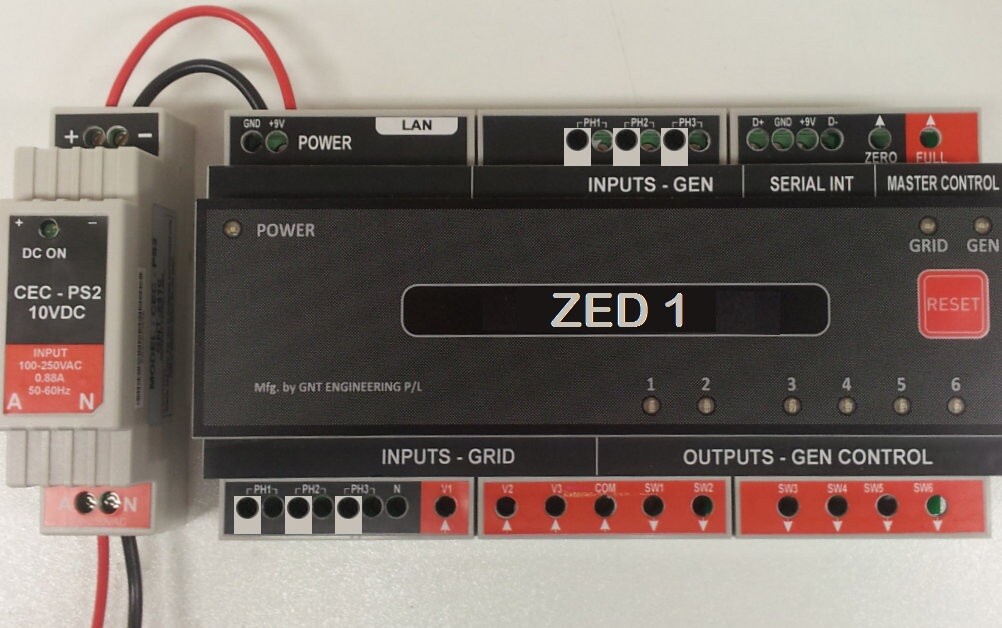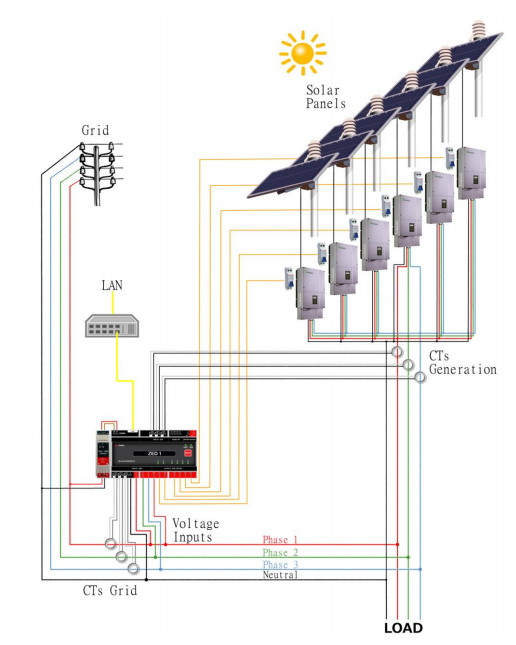Queensland-based GNT Engineering Pty Ltd has developed a device that will enable solar system owners & operators to limit the amount of solar power that their systems export to the electricity grid. The ZED 1, which has already received approval for grid-connection from utilities on a number of its products, addresses a vital need that is growing across the country as a the nation’s pipeline of medium and large-scale solar projects grows. Project developers find themselves having to deal with rules set up by network operators that regulate grid connection and power quality.
[IMPORTANT: GNT Engineering have ceased operations and the ZED 1 is no longer commercially available.]
The ZED 1 is one of a line of products designed and manufactured by GNT whose primary purpose is to monitor the power requirements of a home or business and balance the output of a solar PV system with power from the grid. When power is being consumed, the ZED 1 will connect auxiliary power supply (e.g. a solar PV array or diesel generator), meeting any remaining load with power from the grid. When power consumption declines it will act to eliminate export of power to the grid (‘zero export’) by means of analogue or digital management of outputs–using mechanical isolation to ensure no excess power makes it to the grid.
GNT says that the device will be able to accurately monitor & measure ‘forward and reverse direction of power flow in the mains’ of a solar PV system, as well as the electrical parameters (including voltage, current and frequency) of the circuit it is connected to. Among the device’s other features are:
- Selective switching or 4-bit binary control for inverter management
- Management & limiting of power exported to the grid by way of mechanical isolation
- Recording & log-keeping of system function, including export, consumption, solar generation, voltage and current
- Universality: leading-edge hardware & software management system
A full list of the ZED 1’s features can be found here (PDF).
[IMPORTANT: GNT Engineering have ceased operations and the ZED 1 is no longer commercially available.]
© 2014 Solar Choice Pty Ltd


i had one question i have 30kw solar power my demand is 15 kw and my daily solar energy produced up to 20kw.so i did not have netmetering for my provision i did not use 5kw daily so i want to ground for that your zero export device give a solution please explain me
Hi varatharaj,
I’d recommend getting in touch with GNT Engineering directly about this. Their number is: +61 (0) 7 5564 6828.
Best of luck!
What would be the purpose of limiting export to the grid if you are consuming more than you can use?
I fear we may follow the path of Spain with solar being taxed for off grid installations.
Hi Aston,
There wouldn’t be any purpose to limiting export of solar to the grid if you’re consuming more than you use, but there are cases in which you wouldn’t want to export if you are producing more power than you can use. This is because, as mentioned in the article, some utilities and jurisdictions will not allow you to install a system in the first place unless you can guarantee that it won’t put electricity into the grid. If someone lives in an area where this kind of rule is in place (regional WA and regional QLD both have utilities with such rules), they might be required to install one of the devices mentioned in the article.
If they live in an area with no such rule (but where exporting power to the grid is a ‘waste’ of precious solar power that is worth more when they consume it themselves) they should try to make sure that their solar system is sized appropriately (i.e. just big enough to meet daytime electricity needs). We’ve written about this here if you’d like to read more.
To ??
Does this allow a PV generator of 7KW to be limited to a 5kw export to the grid? If not what\does?
Peter Harris
Hi Peter,
The idea behind these devices is to limit export of solar to the grid, so in principle yes they should be able to do what you’re requesting. You can contact the manufacturer directly to get details about which product would be best suited to your requirements.